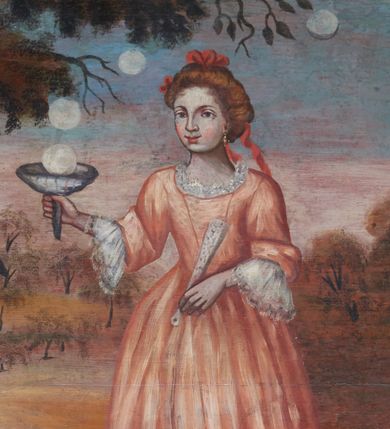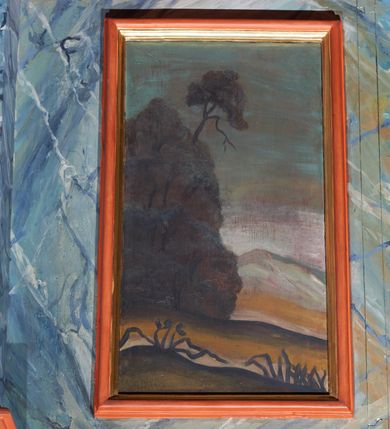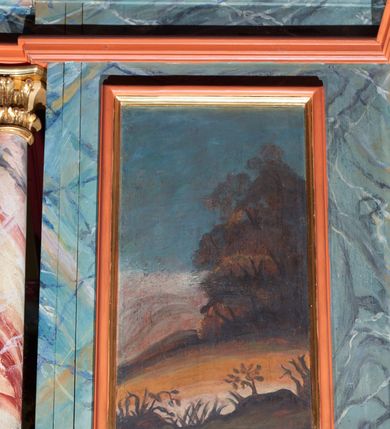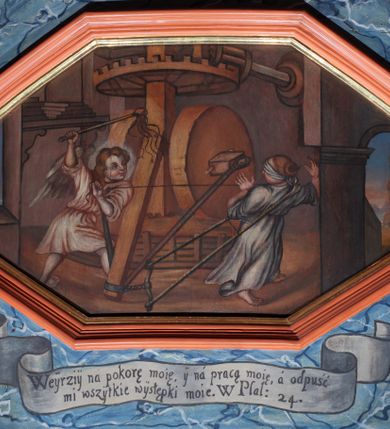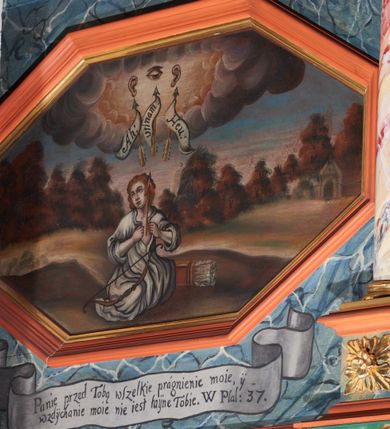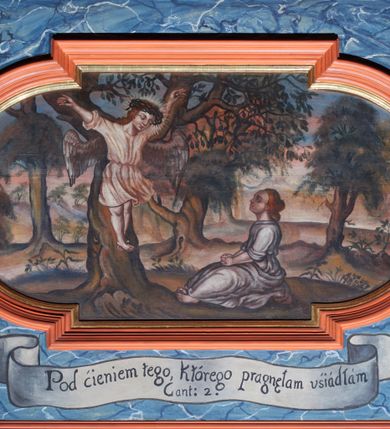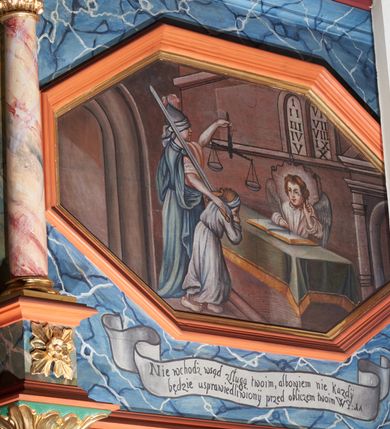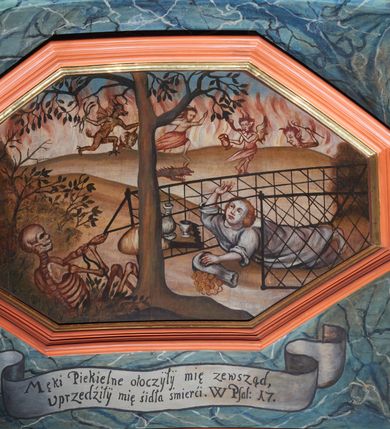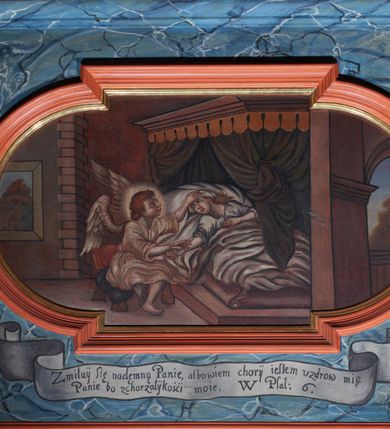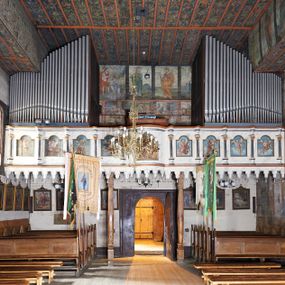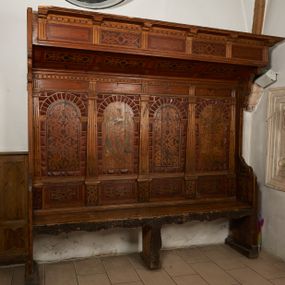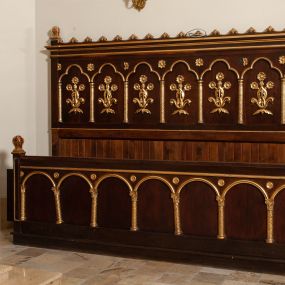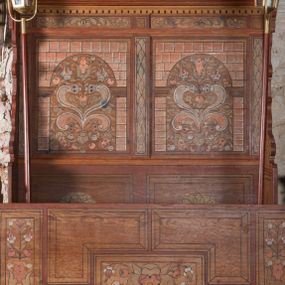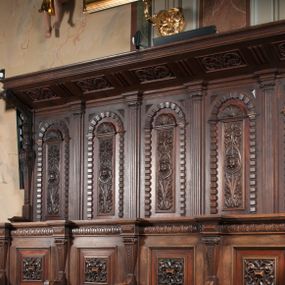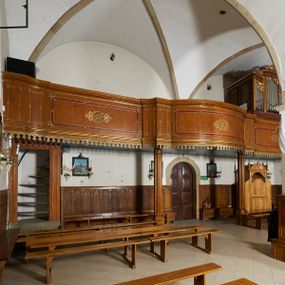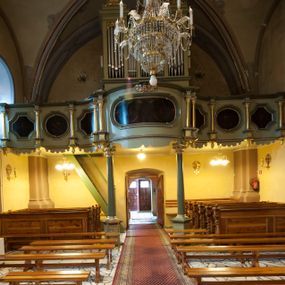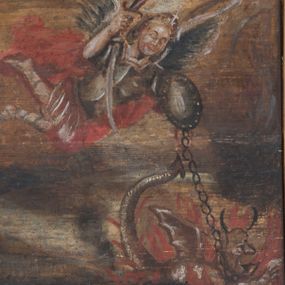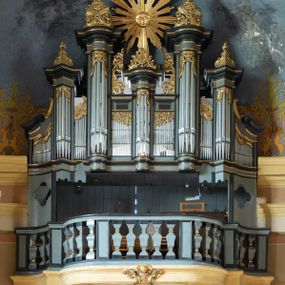
Choir parapet
Identifier
DZIELO/22397
Amount
1
Catalogue note author
Maria Działo
Abstract
The painting decoration of the choir balustrade was created in the first quarter of the 18th century (before 1727). The author of the paintings was inspired by the engravings illustrating the work of the Flemish Jesuit Herman Hugo „Pia desideria emblematis elegiis et affectibus SS. Patrum illustrata", i.e. "Pious desires, explained with emblems, elegies and feelings of holy Fathers", issued in 1624 in Antwerp. "Pia desideria" was illustrated by 48 copperplate engravings of Boetius Adams à Bolswert, one of the most popular Flemish engravers. The first Polish edition was published in 1673 in the translation of Alexander Teodor Lacki entitled „Pobożne pragnienia, trzema księgami przez Wielebnego Ojca Hermana Hugona Soc. Jesu łacińskim opisana językiem. I Jęczenia dusze pokutującej. II Żądze dusze świętej. III Wzdychania dusze kochającej” [Pious desires, described in Latin language in three books by Reverend Herman Hugh Soc. Jesu. I Moaning of penitent souls. II Desires of the soul of a saint. III. Sighing of the loving soul] and it was probably the inspiration to create the ideological concept of the paintings of the modern balustrade. The work, divided into three books, presents the three-step path of the soul to God through purifying penance, holy desires and unity with Him in love. A symbolic betrothed pair appears in the illustrations and subscriptions: Divinus Amor and Anima. Divinus Amor, or the Cupid of God is Christ, and Anima - the Soul.
Other works from this place
Similar works
By title
By category
How to cite?
Maria Działo, "Choir parapet", [in:] "The Sacred Lesser Poland Heritage", 2026, source: https://sdm.upjp2.edu.pl/en/works/choir-parapet
